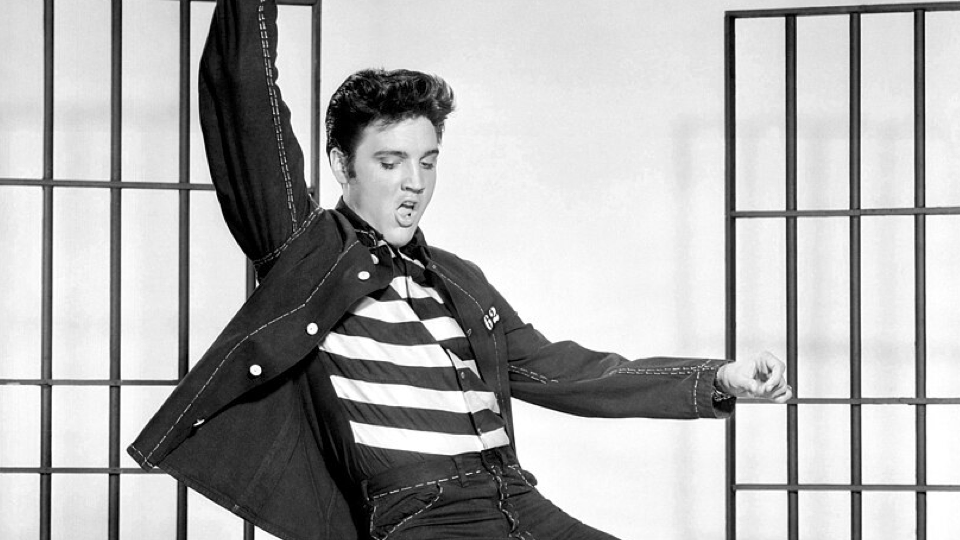There are several musicians who went into prison as a nobody but then came out as a star-in-the-making. Such was the case of high school dropout Charles Berry who, in 1943, went on a mini-robbery spree with his pals James and Skip; Berry later mocked them “as ugly as death eating a dirty doughnut.”
When their 1937 Oldsmobile refused to start, a good Samaritan stopped to help the stranded teens. Berry snarled, “Move over and let me drive.” As Charles and his partners in crime used the stolen Chevy to push their car down a highway, two state troopers pulled them over. Chuck “Charles” Berry recalled that the carjackers received ten-year sentences “for nine minutes’ use of the guy’s car. Why did I do it? Just seven days in jail sanctified me and I was ready to go straight.” After three years in stir, a now determined Berry was released and got his act (and a band) together.
While Berry found fame and fortune outside of prison, some unfortunate singers found their fame while still locked up. Such was the case of the Prisonaires and their songwriter Johnny Bragg. He secured both early freedom from Tennessee State Penitentiary and a contract with Sun Records thanks to his 1953 tune, “Just Walking in the Rain,” which sold 250,000 records.
The birth of the tune occurred when Bragg was walking in the rain in Tennessee State Prison’s courtyard, sighing to his fellow convict Robert Riley: “Here we are just walking in the rain and wondering what the girls are doing.” Riley, believing that Bragg’s comment was an ear-catching lyric for a song, asked for more words from the illiterate Bragg.
Riley was listed as the song’s co-writer and reaped thousands of dollars in royalty payments when Johnnie Ray’s 1956 version sold two million copies and reached #2 on the Billboard charts.
The Prisonaires owe their success to Warden James Edwards and radio producer Joe Calloway, who was preparing a news broadcast from the prison and heard Bragg and the prison’s gospel choir singing. The Prisonaires’ wistful tune became their occasional ticket out of the slammer to perform in churches, VFW halls, and even in Edwards’ home for an audience that included the warden’s wife, two daughters, and an ever-present armed guard.
Sun Records founder Sam Phillips agreed to record their song, glumly watching them walk into his studio wearing shackles and leg irons. A “virtual prisoner” of fame also witnessed them record and later visited Johnny. Bragg remembered asking Elvis Presley what it was like being famous. Presley acknowledged, “Well, it’s the best and the worst of everything.”
Merle Haggard may have had similar sentiments about his time in prison. A judge had given him fifteen years for trying to rob a Bakersfield roadhouse. But he had the good fortune to see Johnny Cash play his first prison concert on January 1, 1958, at San Quentin. Merle remembered: “Johnny had the right attitude. He chewed gum, looked arrogant, and flipped the bird to the guards—he did everything the prisoners wanted to do. When he walked away, everyone in that place had become a Johnny Cash fan. The concert set a fire under me that hadn’t been there before.”
Merle’s cellmate, James “Rabbit” Kendrick told him: “You can sing and write songs and play guitar real good. You can be somebody someday.” Unfortunately, one of Merle’s best songs, “Sing Me Back Home,” about a Death Row killer about to meet his maker, was partially inspired by Kendrick. He’d briefly escaped San Quentin by hiding in a shipping crate only to be captured and given a death sentence for shooting a California patrolman.
Merle recalled watching his friend for the last time in San Quentin:
“It’s a feeling you never forget when you see someone you know make that last walk. They bring him through the yard, and there’s a guard in front and a guard behind. That’s how you spot a death prisoner.”
In 1977, Keith Richards was arrested in his Toronto hotel room for “possession of cocaine and heroin with intent to traffic” and was facing serious jail time. He can be heard on a bootleg record soulfully performing “Sing Me Back Home.” Keith’s take solidified the friendship between these two kindred spirits. After Haggard’s death in 2016, Richards paid tribute by stating: “Sometimes you meet somebody and you know instantly that you’re friends. Merle was one of those kind of cats to me. You knew he’d been around, and he knew I had too.”
If anyone knows about being in prison, it’d be David Allan Coe. From age nine until he was 28, his “job” was breaking the law. When Coe finally paid for his crimes, he took the encouraging words of fellow musician/convict Jalacy (aka “Screaming Jay”) Hawkins to heart and set out to make his mark in country music.
There’s no record of Hawkins attending any of his protégé’s concerts. Likely, he was just too busy with any number of the 57 children he claimed to have sired.
-Mark Daponte
Photo: Elvis Presley in Jailhouse Rock (public domain)





57??!!